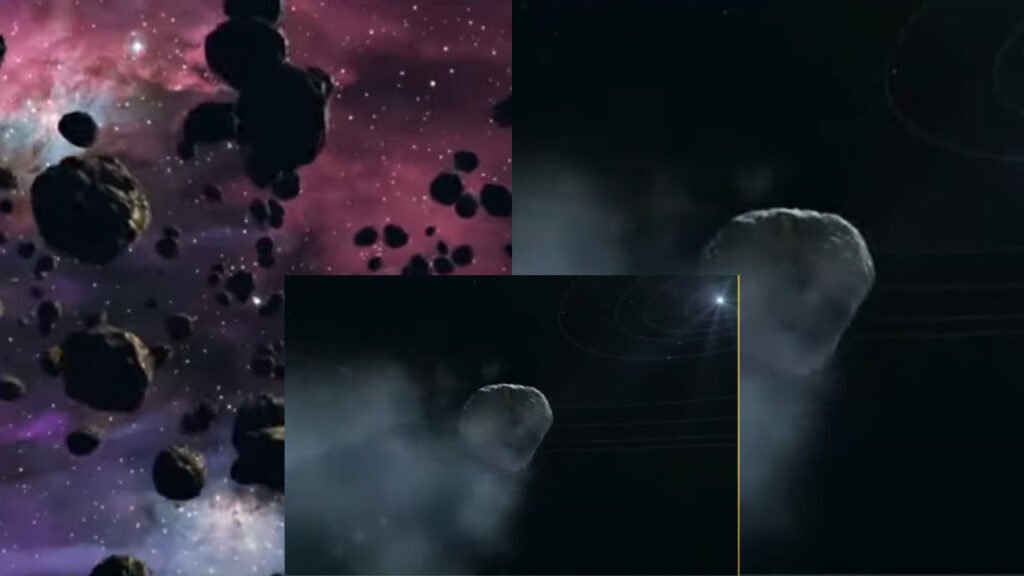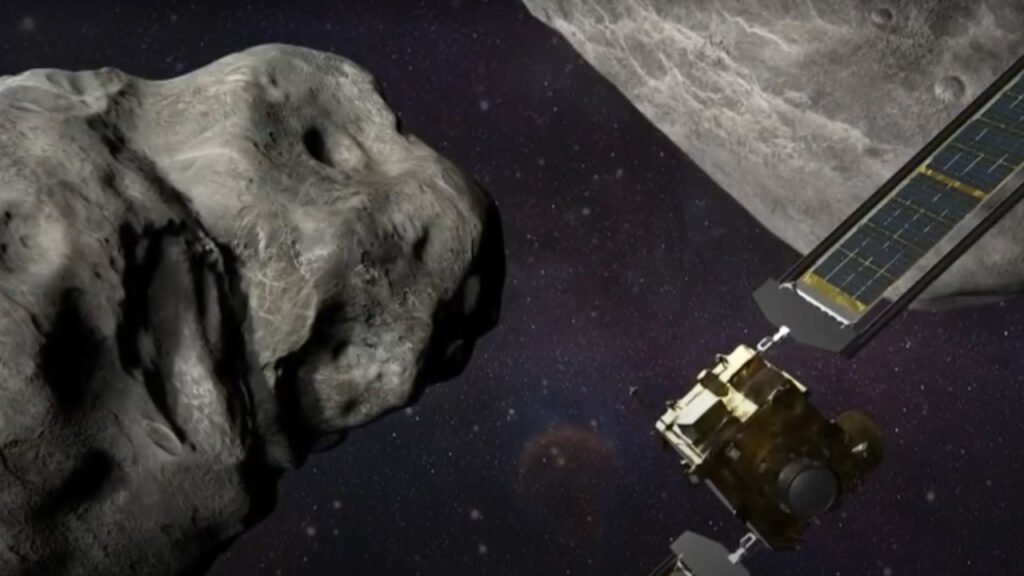Introduction
The Asteroid 2032 Impact Risk: NASA’s Alarming Discovery and What It Means has sent ripples across the scientific community and the general public alike. NASA’s latest findings regarding a potentially hazardous near-Earth object (NEO) have reignited concerns about planetary defence and our ability to prevent a catastrophic event. This blog delves deep into what this discovery means for Earth, the likelihood of an impact, and what measures are being taken to mitigate the risks.
Table of Contents
NASA’s Shocking Revelation About Asteroid 2032
The Asteroid 2032 Impact Risk: NASA’s Alarming Discovery and What It Means revolves around a newly identified space rock that could pose a serious threat to Earth. According to NASA, this asteroid, officially designated (29075) 2032, has been tracked for some time, and recent calculations suggest a slight but noteworthy probability of impact in the coming decades. The size of this asteroid is estimated to be around 1,300 feet (400 metres) in diameter, which could cause catastrophic damage if it were to collide with Earth.
How Real is the Threat of Asteroid 2032 Impact?
Understanding the Asteroid 2032 Impact Risk: NASA’s Alarming Discovery and What It Means requires analysing the probability of a collision. NASA’s Near-Earth Object Observations Program has been closely monitoring this asteroid’s trajectory. While current data suggests the chances of impact are low—estimated at around 1 in 6,000—such probabilities are still taken seriously by scientists. Even with these odds, continuous monitoring and trajectory adjustments are crucial to ensuring Earth’s safety.
Potential Consequences of an Asteroid 2032 Impact
The Asteroid 2032 Impact Risk: NASA’s Alarming Discovery and What It Means brings forward crucial questions about the possible consequences of such an impact. If an asteroid of this size were to strike Earth, it could release energy equivalent to hundreds of megatons of TNT, creating a devastating explosion. Depending on the impact location, the effects could range from massive tsunamis (if it hits the ocean) to widespread destruction of cities (if it lands in a populated area).
Scientists predict that a direct impact could lead to severe climate changes, as dust and debris thrown into the atmosphere could block sunlight for months, leading to what is known as an impact winter. While this is a worst-case scenario, it underscores why NASA and other space agencies are heavily invested in planetary defence strategies.
Potential Consequences of an Asteroid 2032 Impact
The Asteroid 2032 Impact Risk: NASA’s Alarming Discovery and What It Means brings forward crucial questions about the possible consequences of such an impact. If an asteroid of this size were to strike Earth, it could release energy equivalent to hundreds of megatons of TNT, creating a devastating explosion. Depending on the impact location, the effects could range from massive tsunamis (if it hits the ocean) to widespread destruction of cities (if it lands in a populated area).
Scientists predict that a direct impact could lead to severe climate changes, as dust and debris thrown into the atmosphere could block sunlight for months, leading to what is known as an impact winter. While this is a worst-case scenario, it underscores why NASA and other space agencies are heavily invested in planetary defence strategies.How Prepared Are We for an Asteroid Impact Event?
The Asteroid 2032 Impact Risk: NASA’s Alarming Discovery and What It Means highlights an ongoing debate about our readiness for an asteroid impact. While technological advancements in planetary defence have significantly improved, we are still in the early stages of developing reliable asteroid deflection systems.
NASA, along with space agencies such as ESA (European Space Agency) and Roscosmos (Russian Space Agency), is working on refining impact probability models and implementing better tracking mechanisms. The recent NEO Surveyor Mission aims to enhance detection capabilities by identifying hazardous asteroids sooner.

The Role of Public Awareness and Government Initiatives
Raising awareness about the Asteroid 2032 Impact Risk: NASA’s Alarming Discovery and What It Means is crucial to ensuring that governments take proactive measures. Initiatives such as Asteroid Day, observed annually on 30th June, educate the public about the risks posed by near-Earth objects and advocate for increased funding for planetary defence projects.
Government agencies, including NASA, ESA, and China’s CNSA, are investing in research and mitigation strategies, but more collaboration is needed. The UN Office for Outer Space Affairs (UNOOSA) is also working with space agencies to establish global preparedness frameworks.
Could Asteroid 2032 Be Another False Alarm?
Throughout history, there have been numerous instances where asteroids were initially classified as potential threats, only for further calculations to rule out the possibility of impact. The Asteroid 2032 Impact Risk: NASA’s Alarming Discovery and What It Means may ultimately be a case where continued tracking leads to a downgraded risk assessment.
For instance, in 2004, asteroid Apophis was initially thought to have a high chance of impact in 2029. However, refined calculations later eliminated the threat. Similarly, with Asteroid 2032, ongoing observations and improved data could lead to a revised understanding of its trajectory.
What Can We Learn From the Asteroid 2032 Threat?
The Asteroid 2032 Impact Risk: NASA’s Alarming Discovery and What It Means serves as a wake-up call to the importance of planetary defence. It highlights the need for continued investment in asteroid tracking, early warning systems, and impact mitigation strategies.
The incident also reinforces the importance of international cooperation in space exploration and disaster prevention. In an era where space technology is advancing rapidly, collaboration between nations will be key in ensuring that Earth remains protected from potential cosmic threats.

Conclusion
The Asteroid 2032 Impact Risk: NASA’s Alarming Discovery and What It Means has sparked a renewed interest in planetary defence and asteroid monitoring. While the chances of an impact remain low, the potential consequences are too severe to ignore.
With continued research, improved tracking technologies, and proactive mitigation strategies, NASA and other space agencies are working to ensure Earth’s safety. Whether Asteroid 2032 proves to be a real danger or just another false alarm, one thing is certain—the pursuit of planetary defence must remain a global priority.
Stay tuned for updates as NASA continues to monitor the situation and refine its predictions. After all, our ability to protect Earth from celestial threats depends on vigilance, innovation, and international collaboration.
